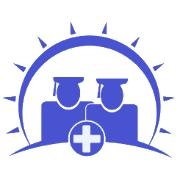Medical Billing and Coding classes near me

Medical billing and medical coding are two essential components that work closely in the healthcare industry. Medical coding serves as the crucial starting point, where detailed codes are matched with health records and claims. Meanwhile, medical billing involves sending these claims to the right payers. The primary aim of medical coding is to ensure billing accuracy and to make sure insurance providers handle claims correctly. Yet, beyond just billing, this system also plays significant roles in research and in keeping essential medical records up-to-date for patients.
On Dreambound, there are 277 medical billing and coding programs, 69 upcoming classes, and the average class length is 9 months.
Let's hear directly from one of our students, Jennifer Souza, about her experience with Dreambound: "I really enjoyed using the Dreambound platform. It's super easy to navigate and provides great information on a wide variety of training programs available both online and in person."
What is Medical Billing and Coding?
Medical billing and coding are essential administrative functions in healthcare. Medical coders translate diagnoses and treatments into standardized codes for insurance claims and record-keeping. Medical billers use these codes to create and submit claims to insurance companies, ensuring healthcare providers receive proper reimbursement for their services. It's a critical aspect of healthcare revenue cycle management.
How much does a Medical Biller and Coder make?
The pay scale for medical billers and coders can fluctuate based on various factors like your background, education, where you work, and the industry you're in. According to data from the Bureau of Labor Statistics (BLS), the median yearly salary for professionals in medical records, which includes medical billers and coders, stood at $47,180 as of May 2022. At the lower end, the bottom 10 percent earned below $31,710, while the top 10 percent earned over $75,460.
How long does it take to become a Medical Biller and Coder?
The duration required to become certified as a medical biller and coder can fluctuate based on an individual's circumstances and their selected training program. Medical billing and coding classes usually last between 9 and 12 months, whether they are hybrid or fully online.
Medical Billing and Coding Classes by City
In order to help you find medical billing and coding class, at Dreambound we've gathered the most comprehensive list of medical billing and coding classes in the US. Below you can find a list of medical billing and coding classes, organized by city. If you don't see your city listed, you can always search by zip code.
- Medical Billing & Coding classes near me in Akron
- Medical Billing & Coding classes near me in Albany
- Medical Billing & Coding classes near me in Albuquerque
- Medical Billing & Coding classes near me in Allentown
- Medical Billing & Coding classes near me in Atlanta
- Medical Billing & Coding classes near me in Augusta
- Medical Billing & Coding classes near me in Bakersfield
- Medical Billing & Coding classes near me in Baltimore
- Medical Billing & Coding classes near me in Boise City
- Medical Billing & Coding classes near me in Boston
- Medical Billing & Coding classes near me in Bridgeport
- Medical Billing & Coding classes near me in Buffalo
- Medical Billing & Coding classes near me in Cape Coral
- Medical Billing & Coding classes near me in Charleston
- Medical Billing & Coding classes near me in Charlotte
- Medical Billing & Coding classes near me in Chicago
- Medical Billing & Coding classes near me in Cincinnati
- Medical Billing & Coding classes near me in Cleveland
- Medical Billing & Coding classes near me in Columbia
- Medical Billing & Coding classes near me in Columbus
- Medical Billing & Coding classes near me in Dallas/Fort Worth
- Medical Billing & Coding classes near me in Dayton
- Medical Billing & Coding classes near me in Denver
- Medical Billing & Coding classes near me in El Paso
- Medical Billing & Coding classes near me in Fresno
- Medical Billing & Coding classes near me in Greensboro
- Medical Billing & Coding classes near me in Greenville
- Medical Billing & Coding classes near me in Harrisburg
- Medical Billing & Coding classes near me in Hartford
- Medical Billing & Coding classes near me in Houston
- Medical Billing & Coding classes near me in Indianapolis
- Medical Billing & Coding classes near me in Jackson
- Medical Billing & Coding classes near me in Kansas City
- Medical Billing & Coding classes near me in Lakeland
- Medical Billing & Coding classes near me in Los Angeles
- Medical Billing & Coding classes near me in Madison
- Medical Billing & Coding classes near me in McAllen
- Medical Billing & Coding classes near me in Miami
- Medical Billing & Coding classes near me in Nashville
- Medical Billing & Coding classes near me in North Port
- Medical Billing & Coding classes near me in Ogden
- Medical Billing & Coding classes near me in Omaha
- Medical Billing & Coding classes near me in Oxnard
- Medical Billing & Coding classes near me in Palm Bay
- Medical Billing & Coding classes near me in Phoenix
- Medical Billing & Coding classes near me in Pittsburgh
- Medical Billing & Coding classes near me in Portland
- Medical Billing & Coding classes near me in Poughkeepsie
- Medical Billing & Coding classes near me in Providence
- Medical Billing & Coding classes near me in Richmond
- Medical Billing & Coding classes near me in Rochester
- Medical Billing & Coding classes near me in Sacramento
- Medical Billing & Coding classes near me in Salt Lake City
- Medical Billing & Coding classes near me in San Antonio
- Medical Billing & Coding classes near me in San Bernardino/Riverside
- Medical Billing & Coding classes near me in San Diego
- Medical Billing & Coding classes near me in Scranton
- Medical Billing & Coding classes near me in Seattle
- Medical Billing & Coding classes near me in Stockton
- Medical Billing & Coding classes near me in Tucson
- Medical Billing & Coding classes near me in Tulsa
- Medical Billing & Coding classes near me in Virginia Beach
- Medical Billing & Coding classes near me in Washington
- Medical Billing & Coding classes near me in Winston
How to Become a Medical Biller and Coder
We know taking the first step to becoming a medical biller and coder can be scary. That's why we're trying to demystify the process by writing guides on how to become a medical biller and coder. Since State process or requirements may vary, we've written separate guides for each state:
- How to Become a Medical Biller and Coder in Alabama
- How to Become a Medical Biller and Coder in Alaska
- How to Become a Medical Biller and Coder in Arizona
- How to Become a Medical Biller and Coder in Arkansas
- How to Become a Medical Biller and Coder in California
- How to Become a Medical Biller and Coder in Colorado
- How to Become a Medical Biller and Coder in Delaware
- How to Become a Medical Biller and Coder in Florida
- How to Become a Medical Biller and Coder in Georgia
- How to Become a Medical Biller and Coder in Hawaii
- How to Become a Medical Biller and Coder in Idaho
- How to Become a Medical Biller and Coder in Illinois
- How to Become a Medical Biller and Coder in Indiana
- How to Become a Medical Biller and Coder in Kansas
- How to Become a Medical Biller and Coder in Kentucky
- How to Become a Medical Biller and Coder in Louisiana
- How to Become a Medical Biller and Coder in Maine
- How to Become a Medical Biller and Coder in Maryland
- How to Become a Medical Biller and Coder in Michigan
- How to Become a Medical Biller and Coder in Minnesota
- How to Become a Medical Biller and Coder in Missouri
- How to Become a Medical Biller and Coder in Montana
- How to Become a Medical Biller and Coder in Nebraska
- How to Become a Medical Biller and Coder in Nevada
- How to Become a Medical Biller and Coder in New Hampshire
- How to Become a Medical Biller and Coder in New Jersey
- How to Become a Medical Biller and Coder in New Mexico
- How to Become a Medical Biller and Coder in New York
- How to Become a Medical Biller and Coder in North Carolina
- How to Become a Medical Biller and Coder in Ohio
- How to Become a Medical Biller and Coder in Oklahoma
- How to Become a Medical Biller and Coder in Oregon
- How to Become a Medical Biller and Coder in Pennsylvania
- How to Become a Medical Biller and Coder in South Carolina
- How to Become a Medical Biller and Coder in South Dakota
- How to Become a Medical Biller and Coder in Tennessee
- How to Become a Medical Biller and Coder in Texas
- How to Become a Medical Biller and Coder in Utah
- How to Become a Medical Biller and Coder in Vermont
- How to Become a Medical Biller and Coder in Virginia
- How to Become a Medical Biller and Coder in Washington
- How to Become a Medical Biller and Coder in West Virginia
- How to Become a Medical Biller and Coder in Wyoming
Exploration of Medical Billing and Coding Versus Other Programs
Considering other programs? Read our guides on Medical Billing and Coding versus other similar programs in field, providing a comprehensive overview to assist you in making the right choice for your career path.
- Acute Care Nursing Assistant vs Medical Biller and Coder
- Caregiver vs Medical Biller and Coder
- CNA vs Medical Biller and Coder
- Chiropractic Assistant vs Medical Biller and Coder
- CPR-BLS vs Medical Biller and Coder
- Dental Assistant vs Medical Biller and Coder
- Diagnostic Medical Sonographer vs Medical Biller and Coder
- EKG vs Medical Biller and Coder
- Emergency Medical Technician vs Medical Biller and Coder
- Graduate Nursing vs Medical Biller and Coder
- Healthcare Documentation Specialist vs Medical Biller and Coder
- Healthcare Information Technology vs Medical Biller and Coder
- Hemodialysis Technician vs Medical Biller and Coder
- Home Health Aide vs Medical Biller and Coder
- Licensed Vocational Nurse vs Medical Biller and Coder
- Massage Therapist vs Medical Biller and Coder
- Medical Administrative Assistant vs Medical Biller and Coder
- Medical Assistant vs Medical Biller and Coder
- Medical Biller and Coder vs Medical Transcriptionist
- Medical Biller and Coder vs Patient Care Technician
- Medical Biller and Coder vs Pharmacy Technician
- Medical Biller and Coder vs Phlebotomy
- Medical Biller and Coder vs Physical Therapy Technician
- Medical Biller and Coder vs Psychiatric Technician
- Medical Biller and Coder vs Radiology Technician
- Medical Biller and Coder vs Registered Nurse
- Medical Biller and Coder vs Respiratory Therapist
- Medical Biller and Coder vs Sterile Processing Technician
- Medical Biller and Coder vs Surgical Technician
- Medical Biller and Coder vs Veterinary Assistant
Similar courses to Medical Billing and Coding

Fel is a student support representative who guides enrollees to the right program and answers their queries. She's committed to helping students and takes pride in her work. In her free time, she enjoys sightseeing and hanging out with loved ones.





